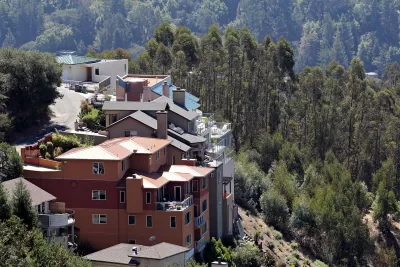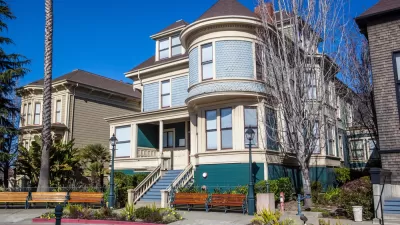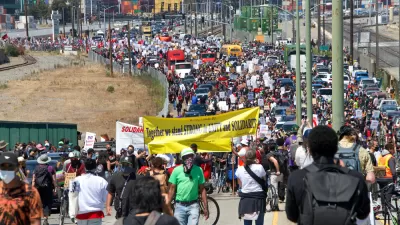The city has a plan to tackle its pothole problem that it says is equitable. But, some residents say it isn’t fair.

A three-year plan to repair decrepit streets throughout Oakland, California, was developed using an equity framework that would not leave out parts the city that have been neglected in the past. But residents in the city’s wealthier Oakland hills neighborhoods are not happy with the proposed distribution of $100 million of funds, which will provide bigger investments to lower-income areas in the flatlands, such as East Oakland and Fruitvale.
"The department weighed two factors equally to decide how to dole out the money: how many miles of poor roads lie in each zone, and how many households qualify as 'underserved' — meaning they are low-income, people of color, non-English speakers, elderly or young," reports Rachel Swan.
Oakland hills residents say that the vast majority of the funding comes from taxes they pay, and roads in their neighborhoods are dangerous and in need of repairs.
"Still, the urgency is greater in low-income neighborhoods, where the cost of fixing a popped tire or a broken axle could drain someone’s livelihood," says Swan. In addition, an analysis of streets in poor condition shows many more residents along each mile of roadway in East Oakland compared to streets in the North Oakland Hills.
FULL STORY: Oakland hills residents break an axle over city’s $100 million pothole plan

Study: Maui’s Plan to Convert Vacation Rentals to Long-Term Housing Could Cause Nearly $1 Billion Economic Loss
The plan would reduce visitor accommodation by 25,% resulting in 1,900 jobs lost.

North Texas Transit Leaders Tout Benefits of TOD for Growing Region
At a summit focused on transit-oriented development, policymakers discussed how North Texas’ expanded light rail system can serve as a tool for economic growth.

Why Should We Subsidize Public Transportation?
Many public transit agencies face financial stress due to rising costs, declining fare revenue, and declining subsidies. Transit advocates must provide a strong business case for increasing public transit funding.

How to Make US Trains Faster
Changes to boarding platforms and a switch to electric trains could improve U.S. passenger rail service without the added cost of high-speed rail.

Columbia’s Revitalized ‘Loop’ Is a Hub for Local Entrepreneurs
A focus on small businesses is helping a commercial corridor in Columbia, Missouri thrive.

Invasive Insect Threatens Minnesota’s Ash Forests
The Emerald Ash Borer is a rapidly spreading invasive pest threatening Minnesota’s ash trees, and homeowners are encouraged to plant diverse replacement species, avoid moving ash firewood, and monitor for signs of infestation.
Urban Design for Planners 1: Software Tools
This six-course series explores essential urban design concepts using open source software and equips planners with the tools they need to participate fully in the urban design process.
Planning for Universal Design
Learn the tools for implementing Universal Design in planning regulations.
City of Santa Clarita
Ascent Environmental
Institute for Housing and Urban Development Studies (IHS)
City of Grandview
Harvard GSD Executive Education
Toledo-Lucas County Plan Commissions
Salt Lake City
NYU Wagner Graduate School of Public Service





























